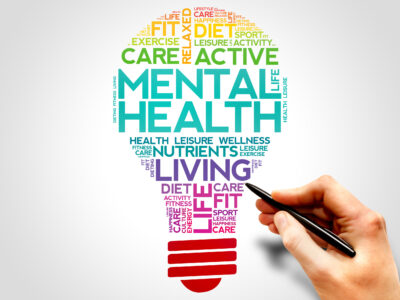Two weeks after celebrating her 12th birthday, Mary Beth* received what she stills considers “the best Christmas present ever”: a charcoal gray Welsh pony with a black mane and tail that she aptly named Smokey. “Oh, my gosh, he was beautiful,” Mary Beth remembers. “And he was so calm. He had a great temperament, so he was the perfect horse […]
Mental Health


When Antidepressants Aren’t Working …
Magnetic pulses of TMS therapy can deliver a ray of hope for those battling depression

Extend Life With Exercise: Even A Little Means A Lot For Mind And Body
The benefits of exercise on physical health are well established. It’s been shown in study after study that regular physical activity helps prevent heart disease and stroke; reduce high blood pressure and cholesterol; control glucose levels associated with diabetes; manage weight and prevent obesity, a contributing factor for many diseases; avoid osteoporosis; and relieve many types of pain, including back […]


Revello Medical’s Activity Center: Where Social Interaction Transforms Health and Happiness
A Gathering Place for Seniors to Exercise, Play, and Connect – An Elixir for Physical and Mental Well-BeingDecades of research have shown that social interaction is an elixir so powerful that it can add years to a person’s life, even people who do not live healthy lifestyles. That is why Revello Medical has an activity center at each of its three Tampa locations. And those centers are why Ivette Cardona Ruelle, MD, is practicing at the family-owned […]


Hints for Handling Holiday Stress
The holidays are upon us. But along with the holidays comes a dizzying array of demands on our time and energy. These demands include planning and preparing meals, baking, shopping, cleaning, attending holiday events and entertaining guests. This season is supposed to be a joyous time full of celebrations with family and friends. But often, we set impossibly high expectations […]


Lifting the Veil on PTSD
Post-traumatic stress disorder, or PTSD, is a mental health disorder that can develop after you experience or witness a traumatic or terrifying event. The triggering event may be a natural disaster, serious accident, terrorist act, wartime combat, sexual or physical assault, domestic abuse, even the sudden, unexpected death of a loved one. While the event is happening, you may believe […]


Improving Employee Health
In 1979, the President’s Council on Physical Fitness, Sports and Nutrition founded the National Association for Health and Fitness, which in turn created Global Employee Health and Fitness Month. The aim of this annual observance in May is to promote the benefits of a healthy lifestyle to employers and their employees through worksite health promotion activities and environments. Almost half […]


Minding Mental Health
May is a great month! Spring is in full bloom (which isn’t entirely GOOD news for those of us with allergies), and it’s a time to celebrate our very special Moms. There’s another tradition we observe in May. It’s the time we become more aware of mental health and mental illness. Mental illness is a huge issue, and there’s […]


Handling Holiday Stress
The holidays are a happy season for joyfully celebrating with family, friends, and coworkers. But for many people, this season is also a time of heightened anxiety and stress. Often, people get worked up from the increased responsibilities, lofty expectations and soaring financial pressures that go along with the holidays, and that causes them distress. If you get stressed out […]




